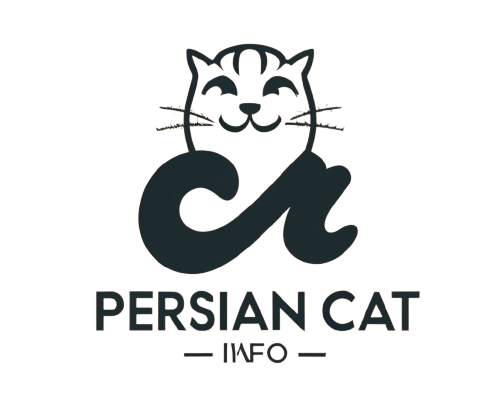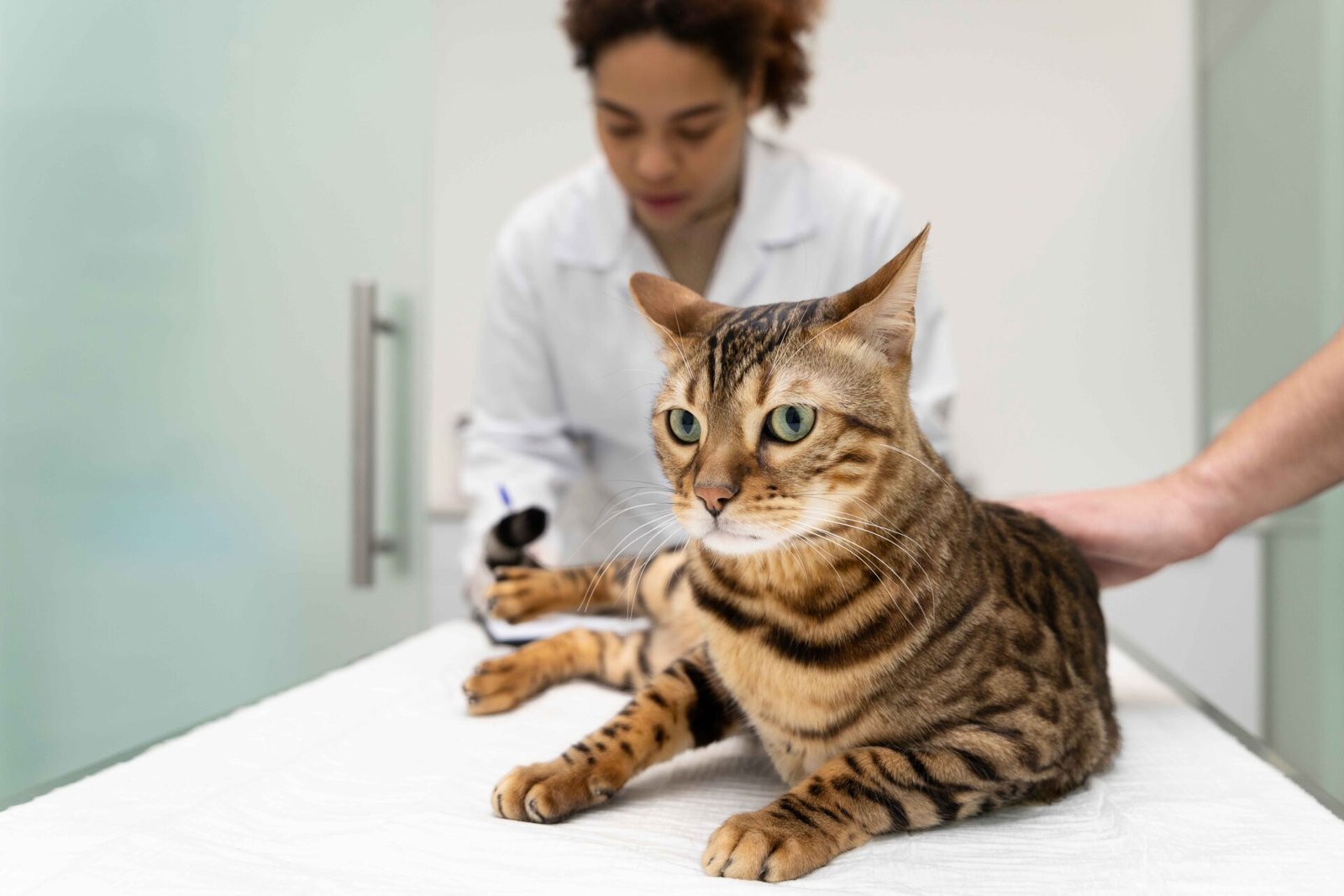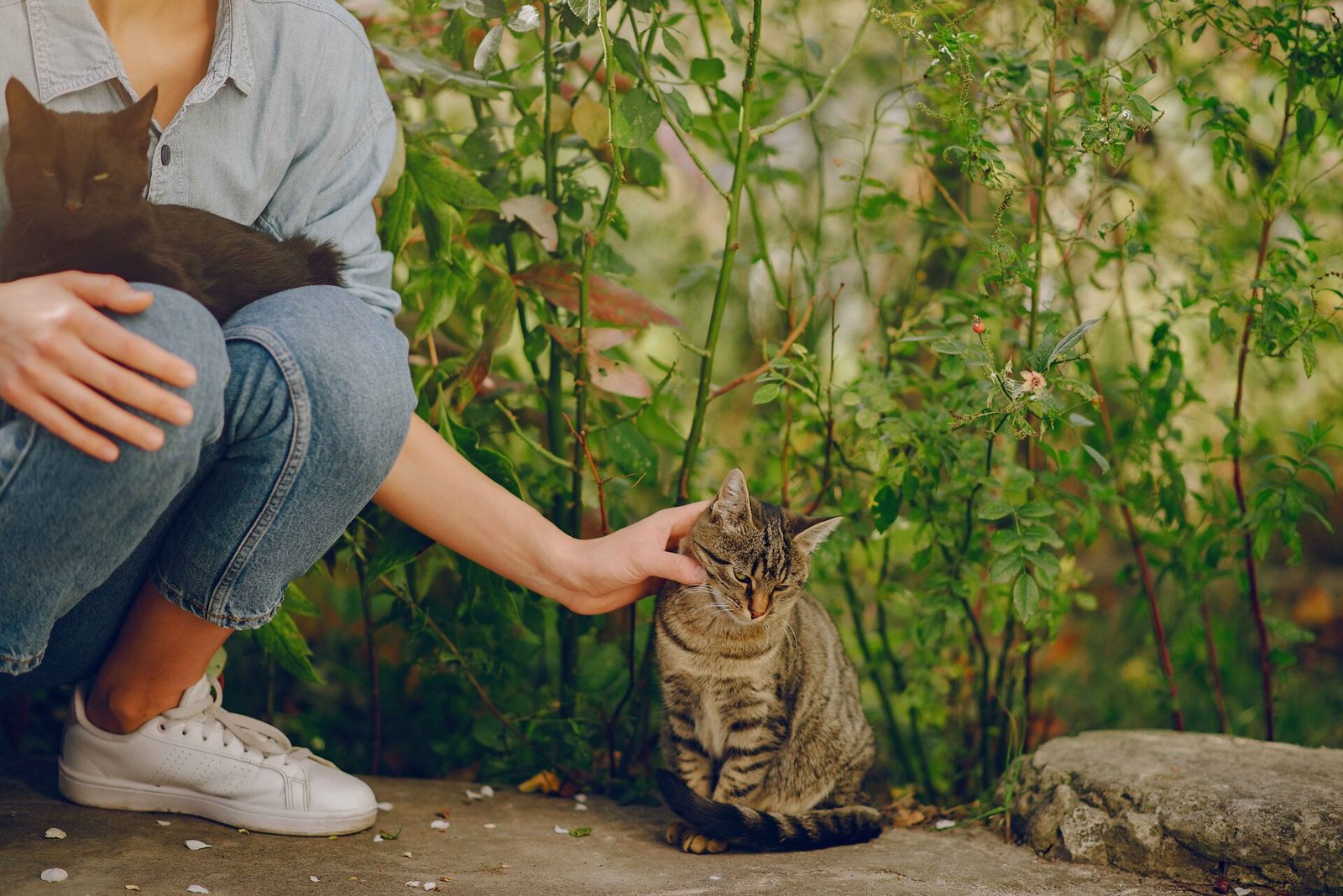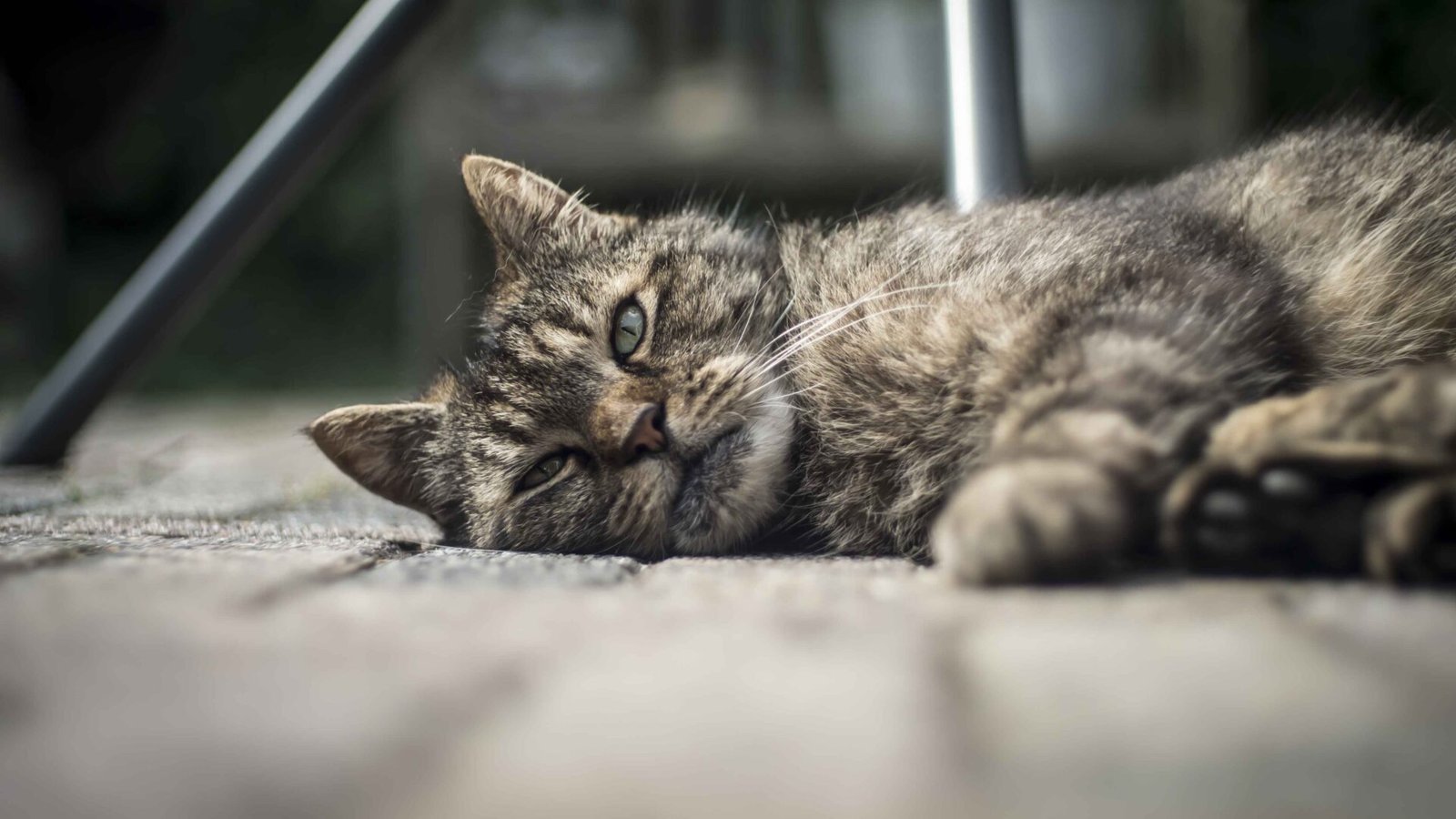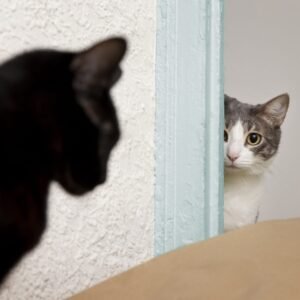Are you considering bringing a tabby cat to your home or do you have already? Then you must be worried about common health problems with tabby cats.
With their striking coat patterns of bold stripes or swirling designs, it’s easy to overlook the potential health issues that tabby cats can face.
Tabby cats are mostly healthy if we take care of them regularly but cats also become victims of health problems and some genetic issues
Worms
Worms are one of the most dangerous parasites a cat can come across.
It has been found that outdoor cats are more likely to contract worms than indoor cats. Different types of worms stuck on cats but below are common:
- Roundworms
- Tapeworms
- Hookworms
- Heartworms
- Eyeworms
- Lungworms
That is a large number of worms! However, depending on where your cat lives in the world, some of these worms are less frequent.
In addition, age influences whether or not some cats develop specific worms. Roundworms, for example, are more common in kittens than tapeworms.
First, we discuss roundworms which are the intestinal worms. Cats are affected by them at all ages adult or kittens and getting rid of these worms is much more difficult.
Cats can ingest those eggs through eating whether that’s food or attacking prey. Female kittens pass these worms to their kittens through the ingestion of milk
Tapeworms are a little different from roundworms Cats eat fleas during itching that causes roundworms in their body. Mostly this happens during the grooming routine of cats.
Tapeworms are long and flatworms that contain several eggs in their body.
Hookworms are the most dangerous worms that can cause infection in the lining of the intestine. This can result in some really bad health issues like rapid weight loss and even some bleeding.
How do cats get rid of worms?

Treatment of worms is done by different applications.
- For Tabby Kitten treatment is every week but as the age of cats differs treatment also takes place.
- Worms are cured by medication but if we don’t care it may cause a fatal condition
- Treatments are available everywhere, but it is advised to consult a vet first.
Fleas
The most common disease present in cats is horrible fleas that become impossible to get rid of. Fleas are annoying pests for cats because they affect their whole fur and cause itching.
They are equally as annoying for owners too, especially when they jump from one host to another.
Fleas can cause your cat to scratch excessively as they continue to bite him. When the cat bites out of control, it can produce sores and even meow in pain.
Cats who scratch excessively wind up clawing out large pieces of their fur coat.
Symptoms of flea cats are:
- Excessive itching (leads to clumps of hair on the floor)
- Meowing in pain
- The visibility of fleas crawling through the fur
- Scabs, sores, or redness of the skin
- Flea dirt in the carpet or fur (turns red when wet with water
What are treatments to get rid of fleas?
It is easy to get rid of fleas if you act upon some of the advice
- Flea Droplets( Mostly flea droplets are safe for cats)
- Flea collars ( but must concern from the vet before using it)
- Use flea shampoo during bathing.
- Use prescribed medicine from the vet
- Regularly cleaning your room.
- Keeping all windows and screens closed to prevent fleas from entering the home.
- Treating carpet and floor with flea spray.
Vomiting
Cat owners witnessing one of the most troubling things is vomiting. There are different reasons for vomiting but one of the basics is upset stomach.
There are a couple of things that cause vomiting:
- Poor diet(eating from two to three days)
- Eating spoiled or contaminated foods
- Eating food too quickly
- Drinking water too quickly
- Changing the cat’s diet too fast
- Hairballs
- Food allergies
- Bacterial infections
- Poor medications
- Eating something toxic like insects etc.
All these things cause vomiting such as a contaminated diet that causes acidity in the stomach. Eating food too quickly or a slow process of digestion also causes vomiting sometimes.
The transition from a heavy protein diet to dry and wet food also causes vomiting. In some instances, The cat’s vomiting is a sign of serious health issues. Daily vomiting can signify that the cat has eaten something toxic by mistake.
Outdoor parasites like insects or something toxic like bugs or insects. Indoor parasites like tapeworms and hookworms are also one of the reasons for vomiting.
If you see something like blood or clots in the vomiting something desperately is wrong.
Foam in vomit is usually associated with hairballs or sudden diet changes. If the cat is dealing with stomach inflammation that can also cause white foam.
Treatment to get rid of vomiting
- Withhold food or water for 12 to 24 hours
- Giving the cats digestive oil.
Lethargic Behavior In Cats

If your cat is slumbering and lazy it is not about health concerns. But it is a sign that something is wrong with your cats.
Cats tend to be lethargic when they are not getting enough attention or if they are in some kind of pain.
Symptoms
Cats with lethargic behavior show:
- Stop eating and drinking water
- At the stage of depression and lose their social nature.
- Constantly sleep
- Lack of interest in playful activities
- Lack of general awareness
Lethargic behavior leads to:
- Vomiting
- Dehydration
- Diarrhea
- Obesity
- Bladder infections
- Asthma
- Diabetes
- Parasites
- Surgical procedures
- Weight loss
- High fever
- Poor coat quality
- Increased urination
- Stress
- Anemia
Treatment of lethargic behavior of cats
- Get regular vaccinations
- Provide a healthy and consistent diet
- Spend time with your cat
- Allow the cat to explore
- Stimulate the cat with brain activities
- Regularly check for injuries and other issues
- Keep your cat indoors
- Putting your cat into a low-stress environment
Obesity
Have you heard about fat cats? Cats are a lot like turtles, They want to eat when they are not hungry which causes them to obese.
Obesity is one of the most common health problems in cats. Some cats have variations of genes that cause them more appetite which leads to overeating.
Regular exercise and a balanced diet help prevent obesity.
Dental Issues in Tabby Cats
Dental problems differ in tabby cats. Cats have dental issues when they eat something too cold or too hot. Cats can everything sink on their teeth, so these problems are common in tabby cats.
Cats can get cavities, broken teeth, gum disease, bacteria, and everything in between. This is especially problematic with cats because they groom themselves regularly.
Cats must have fresh breath and clean teeth. Symptoms of dental issues:
- Lack of appetite and difficulty eating
- Cracked teeth
- Bad breath and odor
- Dark red gum lines
- Ulcers
- Plaque buildup
Treatment of Dental issues
- Professional cleanings as the vet
- Using cat dental gel
- Brushing with fingerbrushes or toothbrushes
Upper Respiratory Tract Infection
If you are a tabby cat owner then you must notice this upper respiratory infection in your cat. The first symptom that tabby cats show during this is sneezing and running nose.
The second sign that the cat shows is irritation with his eyes their eyes change to red color. Different symptoms are shown as:
- Runny nose
- Sneezing
- Congestion
- Red eyes
- Fever
- Lethargy
- Lack of appetite
- Mouth ulcers
Preventative measures for upper respiratory problems:
- Keeping our hands and clothes clean while handling the other cats.
- Keeping your cats indoors
- Reducing stress at home
- Keeping counters wiped down
- Isolating infected cats to certain areas of the home
Cat Lower Urinary Tract Problems
According to research about 64% of cats caused Feline UTI without any specific reasons. It is a disease that is caused in both males and females.
It can also occur at just about any age from kitten to adult. Chances are you’ll see this happen in cats who are at least a year old and up. Older cats beyond 10 years usually won’t display this condition.
Common cause of Feline UTI:
- Inflammation of bladder
- Birth and defects
- Stones and crystals
- Stress and depression
- Debris in urine
- Back issues
A cat owner needs to know caution, symptoms, and preventive measures.
- Trouble or pain with urination
- Constant meowing or hollowing
- Cats attempting to urinate in random locations outside of the litter box
- Blood in the urine
- Blockage of urine flow (droplets and no consistent stream)
- Swollen stomach area
Conjunctivitis
Conjunctivitis is inflammation of the eyes with infection or any allergy. Mostly cats become prey to this disease.
Inflammation of the eye lining is one of the main symptoms of conjunctivitis. Swelling and redness are other causes of this problem. Herpesvirus is the main cause of eye infections.
Mostly amino acid is used for the treatment of conjunctivitis in tabby cats.
Haircoat Disorder
The haircoat disorder of Tabby Persian cats is truly one-of-a-kind. It’s not a flaw but rather a unique feature that sets them apart from other feline breeds.
These cats possess a genetic quirk that results in their fur growing in irregular patches and patterns, giving them a whimsical and endearing appearance.
This special trait adds to their charm and individuality, making Tabby Persians stand out as enchanting and distinctive companions for cat lovers worldwide
